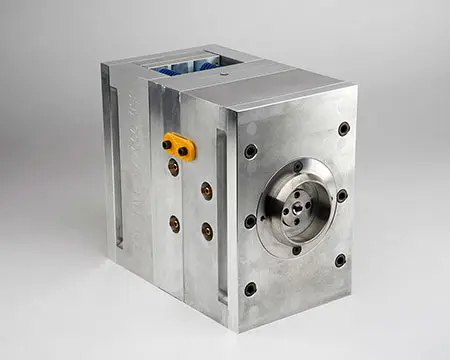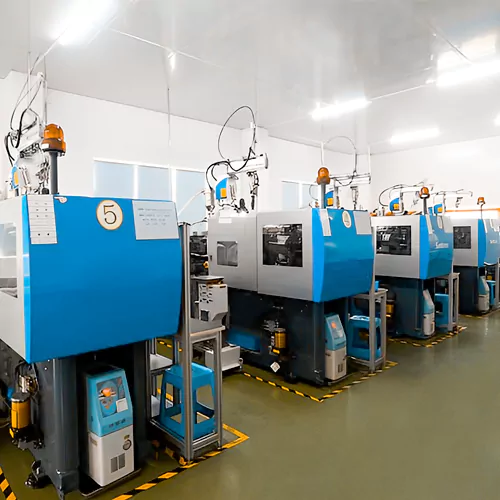Why Plastic Injection Molding Is Important for Precision and Toughness
Recognizing the Basics of Plastic Injection Molding Processes
Plastic injection molding serves as a cornerstone of modern-day manufacturing, giving a systematic approach to generating intricate parts with precision. Exploring these necessary components could reveal exactly how even minor adjustments can lead to significant renovations in production outcomes, increasing inquiries concerning the capacity for advancement in this established procedure.
What Is Plastic Shot Molding?
Plastic shot molding is an extensively utilized production procedure that transforms thermosetting and thermoplastic products into accurate and complex forms. This strategy is preferred for its capacity to create high volumes of identical components with extraordinary precision, making it an essential method in various markets, consisting of automobile, customer items, and medical tools.
The process entails melting the chosen plastic material and injecting it into a mold under high stress. The mold, designed to the specs of the wanted component, enables the liquified plastic to form as it cools and strengthens. As soon as the material has hardened, the mold and mildew is opened up, and the finished element is ejected.
Plastic injection molding provides several advantages, including minimized waste, consistency in manufacturing, and the capacity to incorporate elaborate styles that may be challenging with various other producing approaches. In addition, it sustains a wide variety of products, each supplying special residential properties that can be customized for details applications. As sectors remain to introduce, plastic shot molding stays at the leading edge, allowing the advancement of advanced products that fulfill advancing customer needs.
The Injection Molding Process
The injection molding procedure is an innovative strategy that entails a number of essential stages to produce top quality plastic components. Initially, plastic pellets are fed right into a warmed barrel where they are merged a thick fluid. This molten plastic is then injected under high stress right into a precision-engineered mold, which shapes the product into the desired kind.
When the mold is filled, the plastic is permitted to cool and solidify, taking the form of the mold and mildew cavity. Air conditioning time is essential, as it impacts the cycle time and the final properties of the shaped part. After enough cooling, the mold and mildew opens, and the ended up element is expelled utilizing ejector pins.

Materials Utilized in Injection Molding
Various materials can be utilized in the shot molding procedure, each offering one-of-a-kind properties that cater to specific applications. One of the most generally made use of products include thermoplastics, thermosetting plastics, and elastomers.

Thermosetting plastics, like epoxy and phenolic materials, go through a chemical adjustment throughout the treating procedure, causing a rigid, stringent framework. These materials are optimal for applications calling for high warm resistance and architectural honesty, frequently made use of in vehicle components and electric insulators.
Elastomers, including silicone and rubber-based materials, provide versatility and strength. Their unique residential properties make them suitable for applications that demand elasticity, such as seals and gaskets.
Furthermore, specialized products like bio-based plastics and compounds are gaining traction for their environmental benefits and enhanced performance qualities, expanding the extent of shot molding applications in numerous industries. Comprehending the buildings of these products is crucial for selecting the suitable type for particular jobs.
Advantages of Injection Molding
Injection molding stands out as a highly efficient manufacturing procedure that supplies many benefits for creating complex parts with precision. Among one of the most substantial advantages is the capability to create intricate layouts that would certainly be difficult or impossible to attain with other methods (Plastic Injection Molding). The process enables in-depth functions and tight resistances, making sure premium components
Additionally, have a peek at this website shot molding is known for its quick manufacturing abilities, making it a perfect choice for high-volume production. As soon as the mold is created, components can be produced rapidly, reducing preparations and enhancing general performance. This performance not just reduces production prices however additionally offers an affordable edge on the market.
The adaptability of materials made use of in injection molding better boosts its appeal. A large range of thermoplastics and thermosetting polymers can be used, permitting makers to pick products that finest meet their specific demands, click reference including toughness, warm, and adaptability resistance.
Furthermore, the procedure lessens waste, as excess material can commonly be reused and reused. This sustainability aspect adds to a decreased environmental impact, making injection molding a responsible production selection. On the whole, the advantages of injection molding make it a recommended you could try here approach for lots of sectors.
Factors Impacting Product Quality
While various aspects can affect product high quality in injection molding, understanding these components is critical for accomplishing optimum results. Key elements consist of material choice, processing specifications, and mold style.
Material choice plays a crucial duty, as different polymers show special residential or commercial properties that influence flowability, toughness, and thermal security. Insufficient product choice can bring about defects such as bending or insufficient filling.
Processing criteria, consisting of cycle, pressure, and temperature level time, need to be thoroughly regulated. Variations in these settings can lead to inconsistencies in part dimensions and surface area coating. For circumstances, excessively high temperatures may cause degradation of the polymer, while insufficient pressure can cause short shots.
Mold design is similarly crucial, as it identifies the circulation of the molten plastic and the cooling process. Badly designed mold and mildews might lead to irregular air conditioning prices, causing residual stresses and dimensional errors.

Verdict
In verdict, plastic injection molding serves as an important production procedure that makes it possible for the reliable production of premium elements. Mastery of the injection molding process, including the understanding of products and the influence of numerous variables on item high quality, is vital for achieving ideal results. The benefits of this approach, such as cost-effectiveness and design flexibility, more emphasize its significance across multiple markets, strengthening its condition as a preferred selection for high-volume production.
Plastic injection molding offers as a cornerstone of modern-day production, supplying a methodical approach to producing complex elements with accuracy.Plastic shot molding offers numerous benefits, consisting of lowered waste, consistency in production, and the ability to incorporate detailed designs that may be challenging with various other manufacturing techniques (Plastic Injection Molding). As sectors continue to introduce, plastic injection molding stays at the leading edge, enabling the development of advanced products that meet progressing consumer demands
The shot molding procedure is an innovative strategy that involves a number of essential stages to generate top notch plastic elements.In verdict, plastic shot molding offers as a vital manufacturing process that makes it possible for the reliable production of high-grade components.